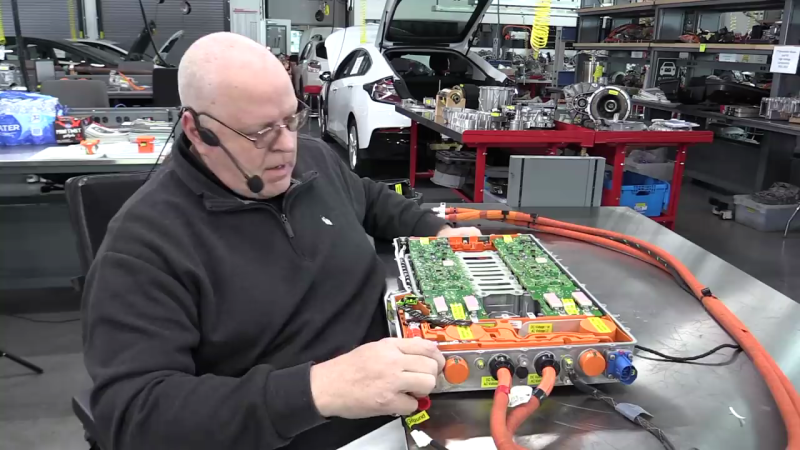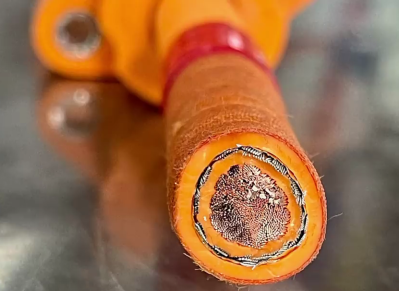
When he’s not busy with his day job as professor of computer and automotive engineering at Weber State University, [John Kelly] is a prolific producer of educational videos. We found his video tracing out the 22+ meters of high voltage cabling in a Tesla Model S (below the break) quite interesting. [John] does warn that his videos are highly detailed and may not be for everyone:
This is not the Disney Channel. If you are looking to be entertained, this is not the channel for you.
We ignored the warning and jumped right in. The “high” voltages in the case of an electric vehicle (EV) like the Model S is approximately 400 volts. Briefly, external input via the charge connector can be single or three phase, 120 or 250 VAC, depending on your region and charging station. This get boosted to a nominal 400 VDC bus that is distributed around the various vehicle systems, including the motors and the battery pack.

Rear Modules
-
- Charge receptacle
- On-board charger module
- Rapid splitter
- Rear motor inverter
Front Modules
-
- High voltage junction block
- Cabin air heater
- DC to DC converter
- Battery coolant heater
- Air conditioning compressor
- Front motor inverter
He goes through each module, showing in detail the power routing and functionality, eventually assembling the whole system spanning two work benches. We liked his dive into the computer-controlled fuse that recently replaced the standard style one, and were impressed with his thorough use of labels.
If you’ve ever been curious about the high voltage distribution of a EV, grab some popcorn and check out this video. Glancing through his dozens of playlists, [John]’s channel would be a good place to visit if you’re interested any topic related to hybrids and electric vehicles, drive trains, and/or transmissions. We’ve written about some Tesla teardowns before, the Model 3 and the Model S battery packs. Have you worked on / hacked the high voltage system in your EV? Let us know in the comments below.
0 Commentaires